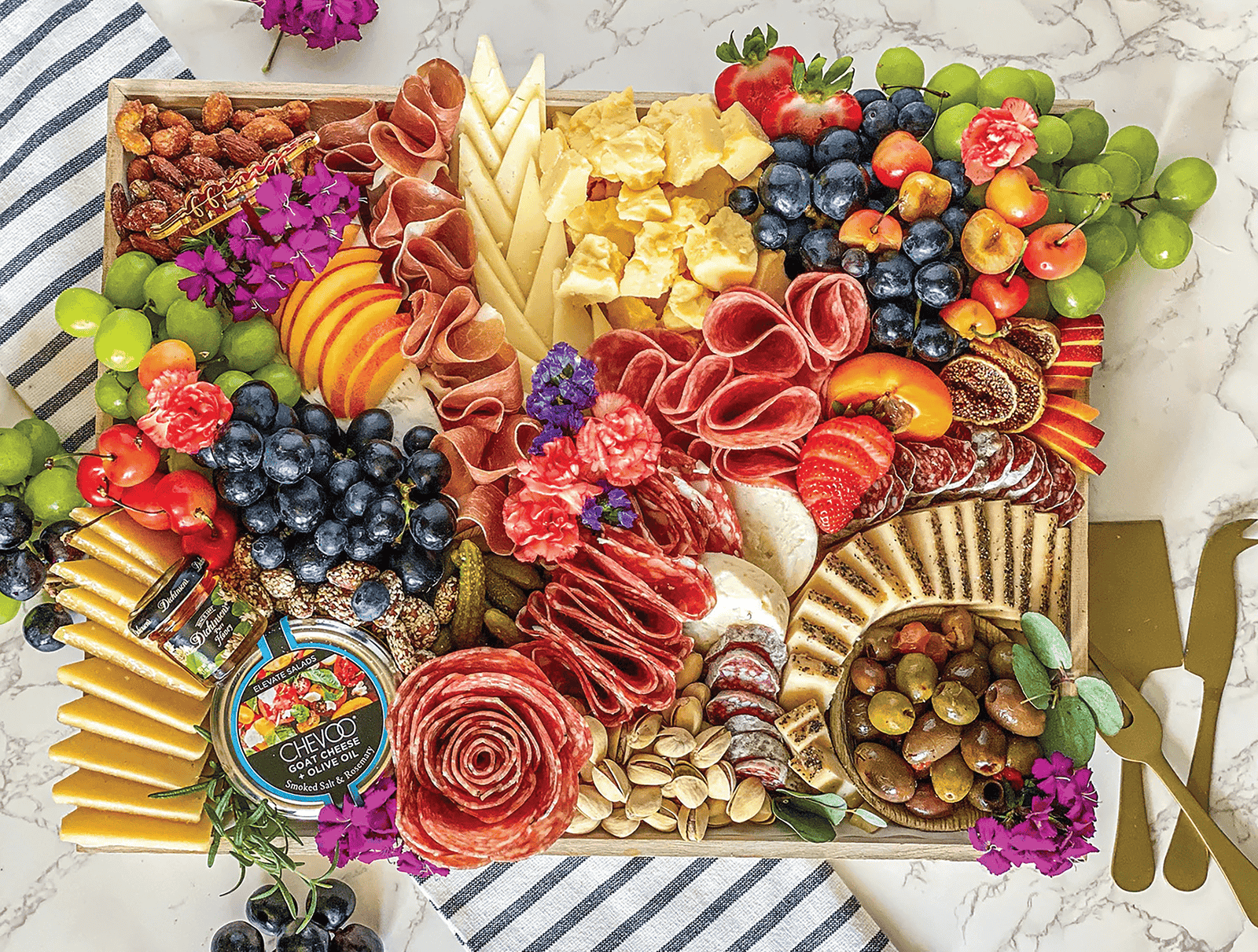
Over the past five years, there’s been a noticeable shift in human grazing habits. We’ve discovered the ease of a snack board, and cheese plate curations have skyrocketed in popularity (#cheeseboard has over 2.2 million posts on Instagram!). The shift from going out to hosting has opened doors for creativity when it comes to board building, and Dina Bshara of San Francisco–based Affinage Boards knows all too well the dos and don’ts for crafting a crowd-pleasing platter.
Her company began as a passion project during the throes of the pandemic and quickly grew to creating upwards of 40 to 50 large boards a week, catering corporate events and weddings, and hosting educational workshops on board building. When it comes to teaching, Bshara says:
“It’s about finding quality products that you enjoy and plating them in a way that is inviting to your guests and makes you happy.”
HERE ARE HER TOP TIPS:
1. Vary it up: We stress the importance of having different textures of cheese, such as a soft cheese, a semi-firm cheese, and a firm cheese. We also recommend mixing different milks—cow, goat, and sheep. There are even vegan cashew cheeses if you want to switch things up. Include fresh seasonal fruit, such as stone fruit in the summer or figs in the fall, and a sticky, sweet accompaniment such as honey or jam. If you’re including charcuterie, go for different types, textures, and flavor profiles. I personally love the fennel profile of a finocchiona salami. The appeal of a grazing board is that every bite is different, and there are no right or wrong combinations.
2. Keep portion sizes in check: If you’re serving an appetizer platter, buy around two ounces of cheese per person and one ounce of each accompaniment per person. The easiest way to make sure you stick to your budget is to only buy as much as you need. As fun as it is to try six or seven different cheeses, it’s more important to reduce waste.
3. Step up your prep: Give yourself at least an hour to prep. Prep charcuterie the night before by removing packaging and slicing salamis. Leave grapes, strawberries, or other berries whole and dry them really well, placing them on a paper towel to absorb as much moisture as possible. If you plan on putting nuts on the board, leave space for those, but don’t fill it until just before guests arrive. Make sure you take cheese out of the fridge at least 30 minutes before the event begins, and as beautiful as bread and crackers look on a board, they can get soggy, so keep them in a bowl or platter separate from the cheese board.
4. Include upgrades: I love honeycomb. It really is a showstopper. Sometimes we like to sprinkle pollen, or crumbled, dehydrated citrus on top to take it up a notch. I also think edible flowers such as pansies and nasturtiums are a really fun way of adding something people may not have seen before. And as far as presentation goes, we use wooden platters and compostable palm leaves platters. And honestly, I love a marble platter—they’re beautiful, but also functional in that they stay cold. If you’re creating a brie cake or a burrata and melon board, a marble platter is going to give those boards a bit more time on the table. Also, don’t forget the herbs! Not only are fresh thyme or rosemary a beautiful garnish, but they can also accentuate the flavors in the cheese.




